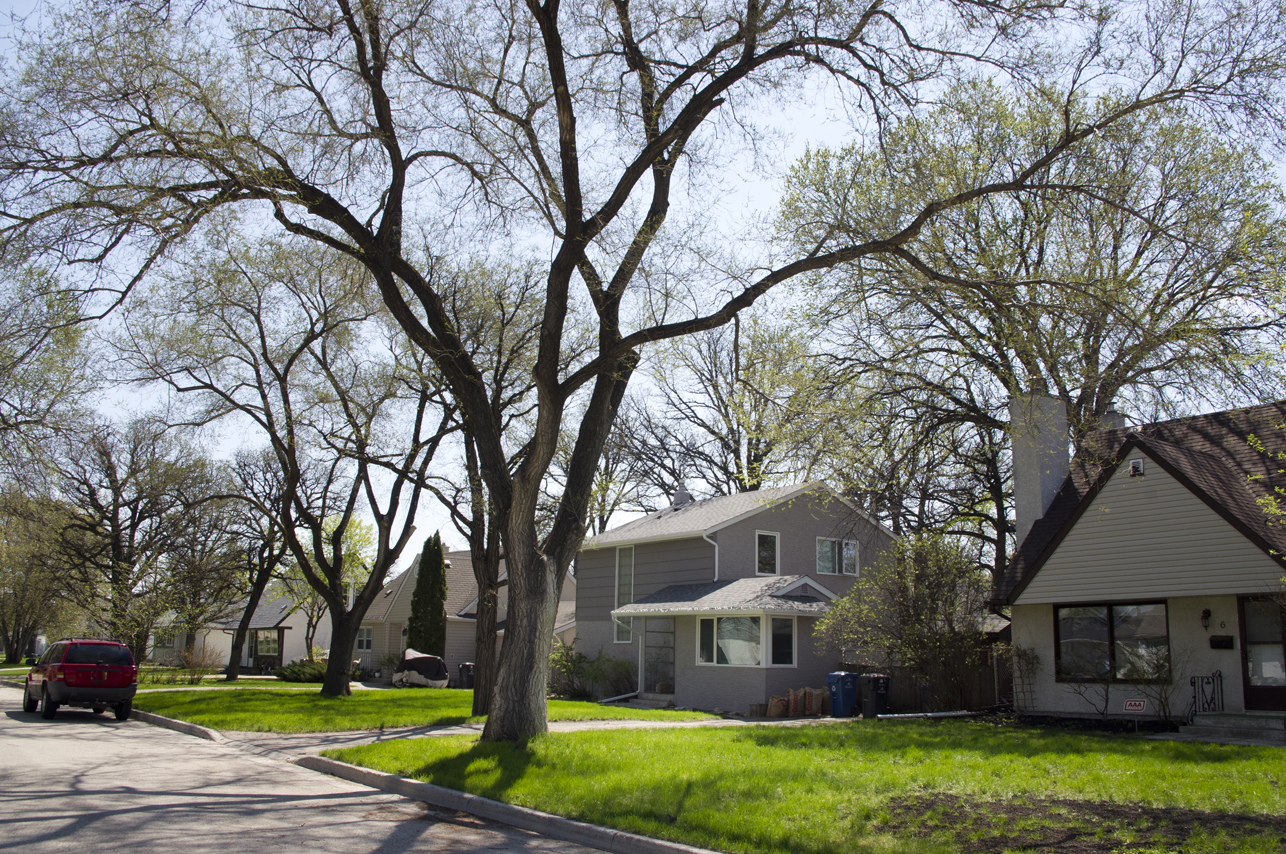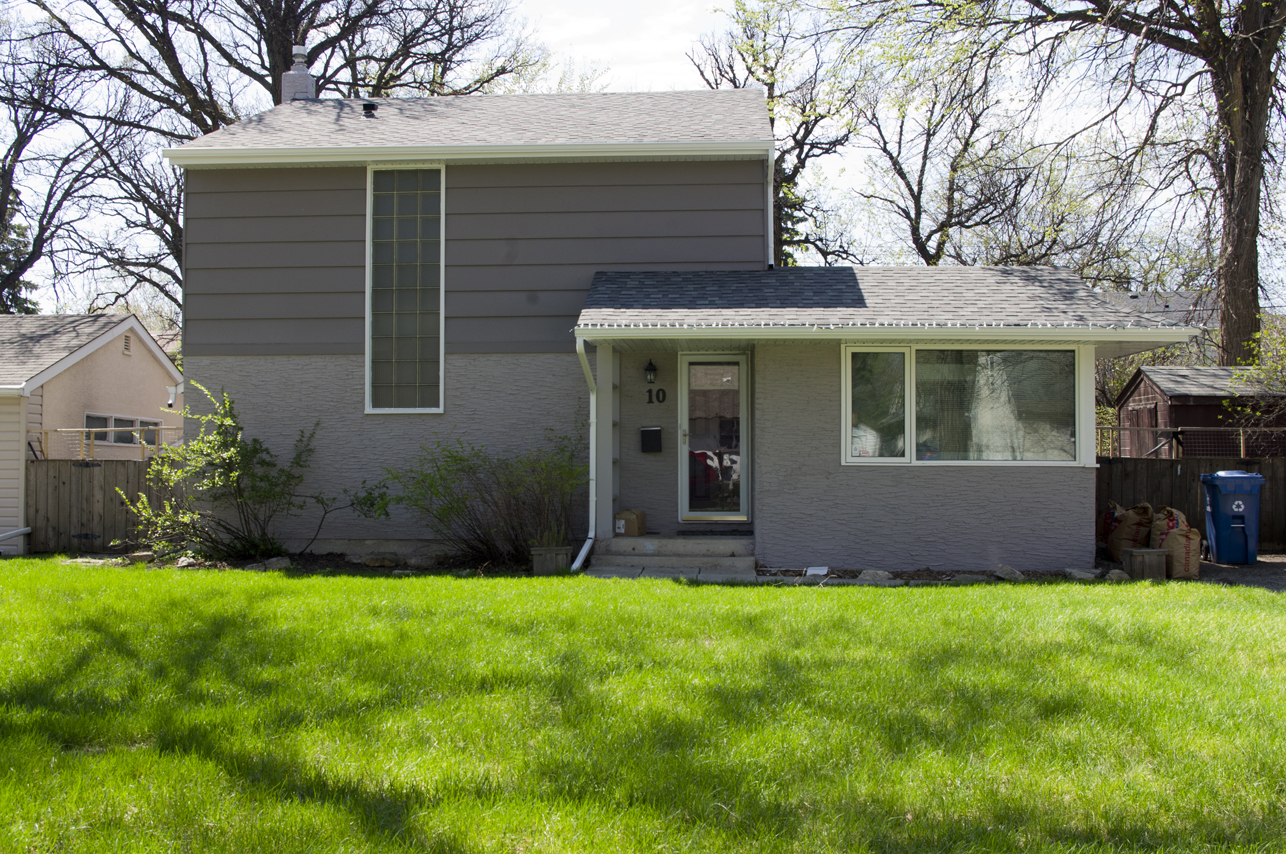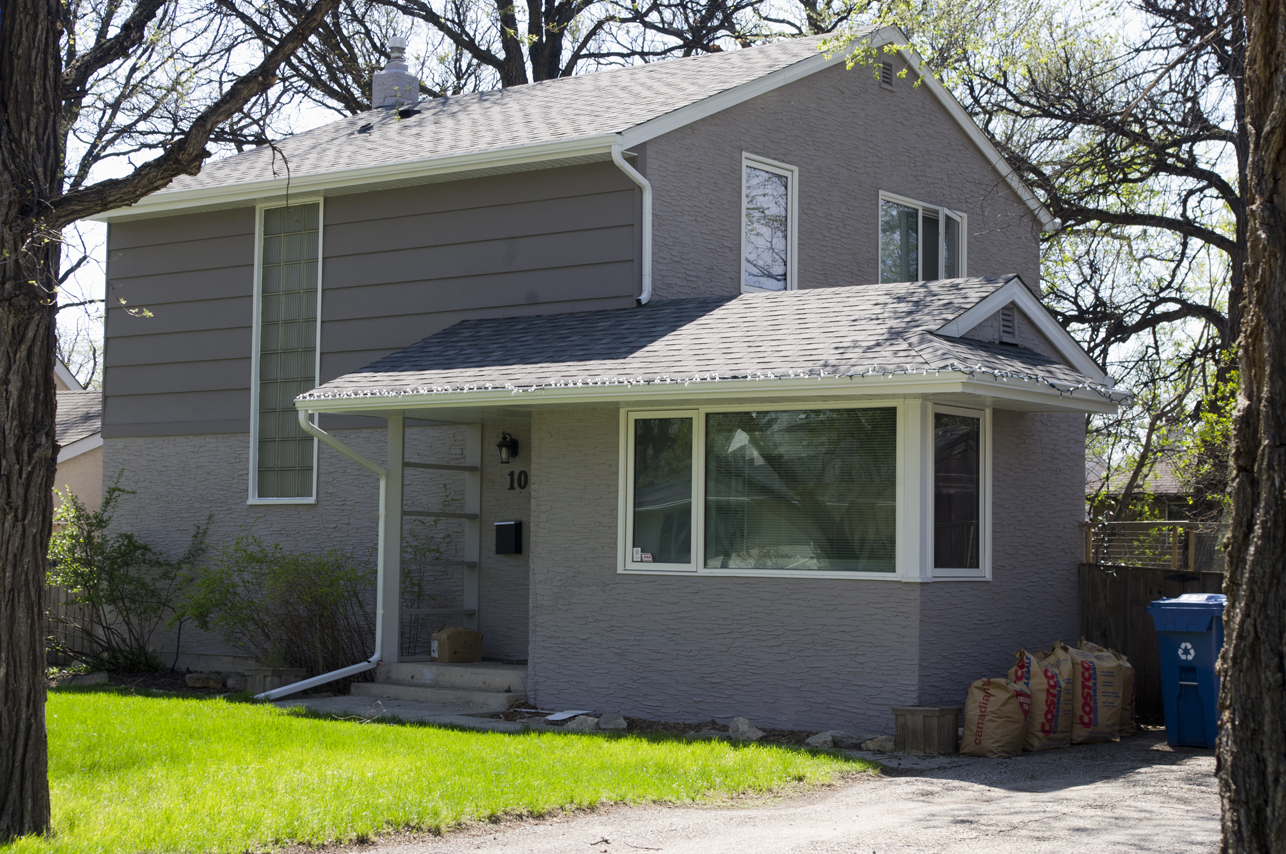10 Hind Avenue
| Address: | 10 Hind Avenue |
|---|---|
| Original Use: | Dwelling |
| Constructed: | 1951 |
| Architects: |
|
| Contractors: |
More Information
The Silver Heights subdivision began with the sale of a sizeable tract of land by the Municipality of St. James to Frank Reade Lount of the Frank Lount and Son Company in 1949. At the time of construction the Silver Heights subdivision was the last largely undivided and undeveloped tract of land in St. James, which had otherwise undergone substantial residential development.
The subdivision’s plan, developed by the Lount Company, had Mount Royal Road as the main thoroughfare. Projecting off of this north-south oriented road, to the east and west, were several tree-lined curving crescents. These residential bays provided direct street access to each home, and the division was laid out without back lanes. The building lots within the division average 60 by 100 feet, although they vary in shape due to the loops and crescents they extend from. The addition of a front facing garage was not part of the base purchase price of the homes, which ranged from $11,000 to $15,000.
The project was financed by Sun Life Assurance Limited and the Central Mortgage and Housing Corporation (later the Canada Mortgage and Housing Corporation).
All of the homes constructed within the division had full, unfinished, concrete basements by Concrete Placers Limited, which housed the home’s mechanical equipment. The interior of the homes were finished with flooring of 1/2 inch select oak, with the exception of kitchen, bathroom, vestibule and hall which had Tilevein brand flooring. Interior walls were Gyproc lath and plaster, interior door were flat-panel clear grade mono-type doors, with a glazed finish. At the time of sale the interior trim was paint-grade fir, enamelled white.
The homes within the subdivision are based on eight separate designs, varying from sprawling bungalows to more traditional two-storey gable-roofed homes. These eight variations were further modified in their orientation on each site, the addition of a garage or carport and their exterior finishes and detailing. Interspersed within the division, and providing increased variety, are a number of custom-built homes. Exterior paint colours were used by the Lount Company to further distinguish one home from another; all exterior colours were various shades of wine, coral, green and yellow. All the stucco, used as the primary exterior finish material was standard white.
This largely intact division is an exemplary model of modernist suburb design within the city of Winnipeg and continues to be a desirable neighbourhood and a show-case for the Lount Company and the neighbourhood of St. James. The subdivision utilized innovative building techniques, large scale project management, and “sound building methods, imagination and the introduction of special techniques which have all contributed to make Frank Lount’s Silver Heights community one of Western Canada’s more successful projects.” (Western Construction and Building, 1952)
Design Characteristics
| Roof: | The roof is in two parts. One covering the two-storey section, and one covering the single-storey wing on the west side of the home which also extends to protect the entryway. |
|---|---|
| Materials: | glass block, horizontal siding, paint, siding, stucco, vertical siding, wood The house is clad primarily in stucco and the second story is clad in painted horizontal wood siding and features a large vertical mass of glass block. |
| Height: | 2 storeys |
| Size: | 1,380 square feet (420.62 square metres) |
| Style: | Seven room two-storey |
| Developer: | |
| Neighbourhood: | Silver Heights |
- Subcontractors included: Nelson River Construction Company; Cotter Bros. Ltd, roads, sewers, water and plumbing; Lars Mattson, plastering: Bowyer-Boag Ltd, sheet metal; C. T. Lount Oil Heating Company, heating; Home Painting and Decorating Company, painting; Minaker Construction Company, brickwork; Concrete Placers Limited, basements; Weston Builders Specialties Ltd., roofing, millwork, cabinets, aluminum windows, tile; Walter Wray Limited, garage doors; Hobbs Glass, fixed windows and decorative glass; Wrought Iron Products, ornamental iron.
Sources
“Silver Heights Development.” Western Construction and Building. November 1952.
Rostecki, Randy. “Silver Heights: A Mid-century Modern Winnipeg Subdivision.” For the City of Winnipeg Heritage section of Planning, Property and Development. 2013.
Locations of Supporting Info
Winnipeg Architecture Foundation
Province of Manitoba, Legislative Library
City of Winnipeg, Planning Property and Development Division
City of Winnipeg Archives
Links & Related Places
- Strathmillan School, 339 Strathmillan Road
- Frank Reade Lount


